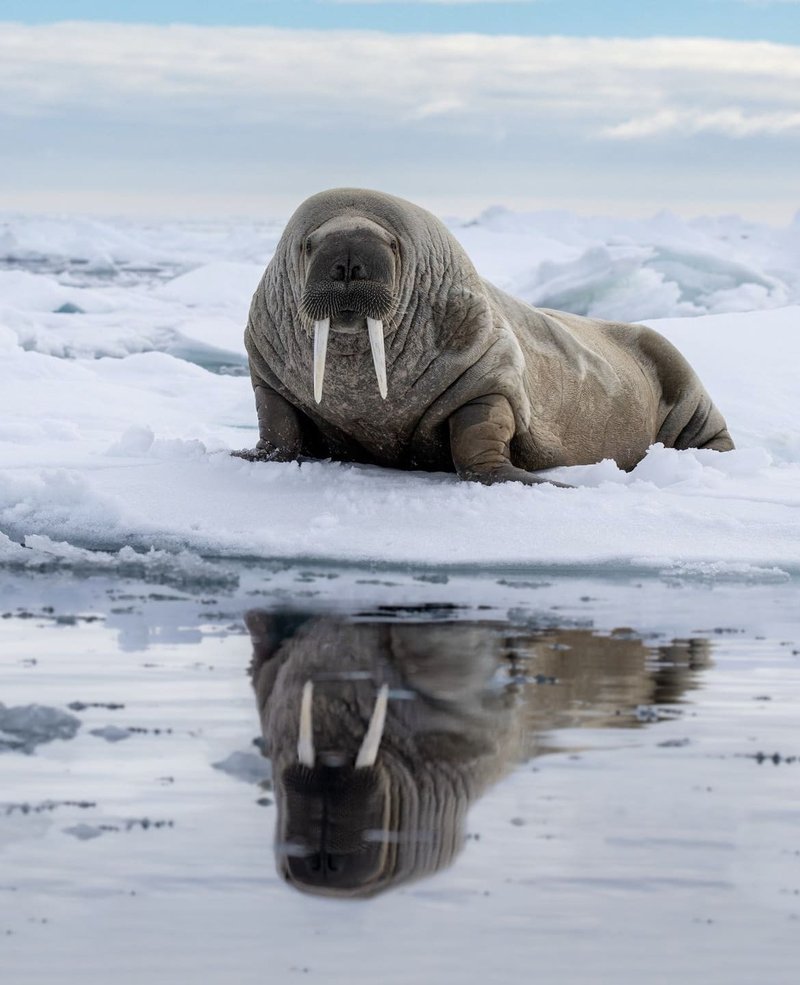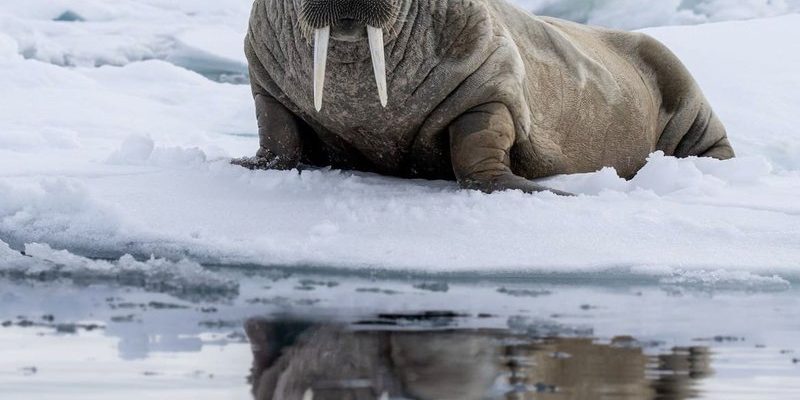
The walrus isn’t just a fascinating animal; it’s a cultural icon in many Arctic communities, where it’s revered and respected. From the Inuit tribes to various groups in Alaska, the walrus plays a role in art, storytelling, and even traditional practices. Yet, many misconceptions surround this majestic creature, making it a compelling subject for exploration. Let’s peel back the layers of myths and cultural beliefs about the walrus and discover what they truly represent.
Walrus Myths in Indigenous Cultures
Across the Arctic, indigenous cultures have woven the walrus into their rich tapestry of stories. The Inuit, for example, view the walrus as more than just a source of food; it’s a spiritual being. Many legends speak of walruses as gentle giants, sometimes transforming into humans and interacting with the community.
One fascinating myth involves the *Inuit goddess Sedna*, who is said to have created the first walruses from her fingertips. This story highlights the deep connection between the walrus and the sea, emphasizing its importance in the hunting traditions and survival of Arctic peoples. These tales not only celebrate the walrus but also serve as valuable lessons about respect for nature and the interconnectedness of life.
Similarly, walruses are often depicted in art and folklore as guardians of the ocean. They symbolize strength and bravery, traits that are highly valued in harsh environments. This cultural reverence reinforces a sense of unity among community members and emphasizes the walrus’s role as a vital resource for sustenance, clothing, and even tools.
The Walrus in Modern Popular Culture
The walrus has made its way into modern popular culture, often appearing in films, cartoons, and literature. One of the most notable examples is the character *Wally*, the walrus from Disney’s “The Jungle Book.” Though not an accurate portrayal of the real animal, Wally’s friendly demeanor and quirky personality have endeared him to audiences.
You might be wondering how this modern representation affects people’s perception of walruses today. Honestly, it can be a double-edged sword. On one hand, it promotes awareness and love for these incredible creatures. On the other, it can lead to misunderstandings about their actual behavior and habitat. Many might see a walrus and imagine it as a friendly cartoon character, rather than recognizing its wild nature and vital ecological role.
Additionally, walruses have appeared in popular music and literature. *The Beatles* famously referenced the walrus in their song “I Am the Walrus,” sparking discussions about its symbolism and meaning. This pop culture presence keeps the walrus in the public eye, fostering curiosity and interest, but it can also dilute the seriousness of their plight in the wild.
Ecological Myths About Walruses
Beyond cultural beliefs, there are plenty of myths surrounding the walrus’s ecological role that deserve clarification. One common misconception is that walruses are solitary creatures. In reality, they are highly social animals often seen in large groups, called herds, lounging on ice or beaches.
These herds can include hundreds of walruses, and they exhibit complex social behaviors. They communicate through a series of vocalizations and body language, which helps them establish bonds and coordinate activities, like hunting and resting. Understanding this social aspect is crucial for conservation efforts; protecting their habitats means preserving these vital social structures.
Another myth is that walruses primarily feed on fish. While they do eat some fish, their diet mainly consists of benthic invertebrates, like clams and mollusks. Walruses use their sensitive whiskers to locate these tasty morsels buried in the ocean floor. By debunking these myths, we can better appreciate the walrus’s ecological significance and the need for sustainable practices to protect them.
Walrus Hunting and Cultural Traditions
For many Arctic communities, walrus hunting is not just a means of survival; it’s a cultural tradition that has been passed down through generations. The hunt is steeped in rituals and respect for the animal, showcasing the deep bond between the walrus and indigenous peoples.
Hunters often wait for the right season, when the walruses come ashore in larger numbers. This timing is crucial; it reflects a profound understanding of the animal’s behavior and habitat. The walrus is not just hunted for its meat but also for blubber, skin, and tusks, which play significant roles in traditional clothing, art, and tools.
However, like many cultural practices, walrus hunting faces challenges from modern environmental issues. Climate change is affecting ice patterns, making it harder for communities to predict when and where walruses will be found. Finding a balance between tradition and adaptation is essential for preserving this cultural significance while ensuring the walrus population remains stable.
Conservation Issues Surrounding Walruses
The walrus, while celebrated in various cultures, is facing significant conservation challenges. Climate change is a major concern, as melting sea ice disrupts their habitat and affects food availability. With less ice, walruses must spend more time on land, where they face increased risks from predators and human disturbances.
You might be thinking, “What can be done to help?” Efforts to protect walruses include habitat conservation initiatives, community education programs, and responsible hunting practices. Many organizations work alongside indigenous peoples to safeguard their traditional lifestyles while ensuring the walrus populations thrive.
Moreover, public awareness plays a crucial role. By educating people about the ecological importance of walruses and their cultural significance, we can foster a sense of responsibility. Supporting conservation efforts not only helps walruses but also honors the traditions and stories that have surrounded them for centuries.
Wrapping Up the Walrus Saga
As we explore the myths and cultural beliefs surrounding the walrus, it becomes clear that this incredible creature is woven into the fabric of many societies. From indigenous legends to modern pop culture, walruses symbolize strength, community, and respect for nature.
Understanding the truth behind these myths enriches our appreciation for this unique animal and the cultures that celebrate it. As we face looming environmental challenges, honoring these traditions and supporting conservation efforts are essential for preserving the walrus’s legacy for generations to come.
The walrus isn’t just a large marine mammal; it’s a cultural icon that teaches us about resilience, community, and the delicate balance of our ecosystems. So the next time you think about the walrus, remember it carries stories and significance beyond what meets the eye.

